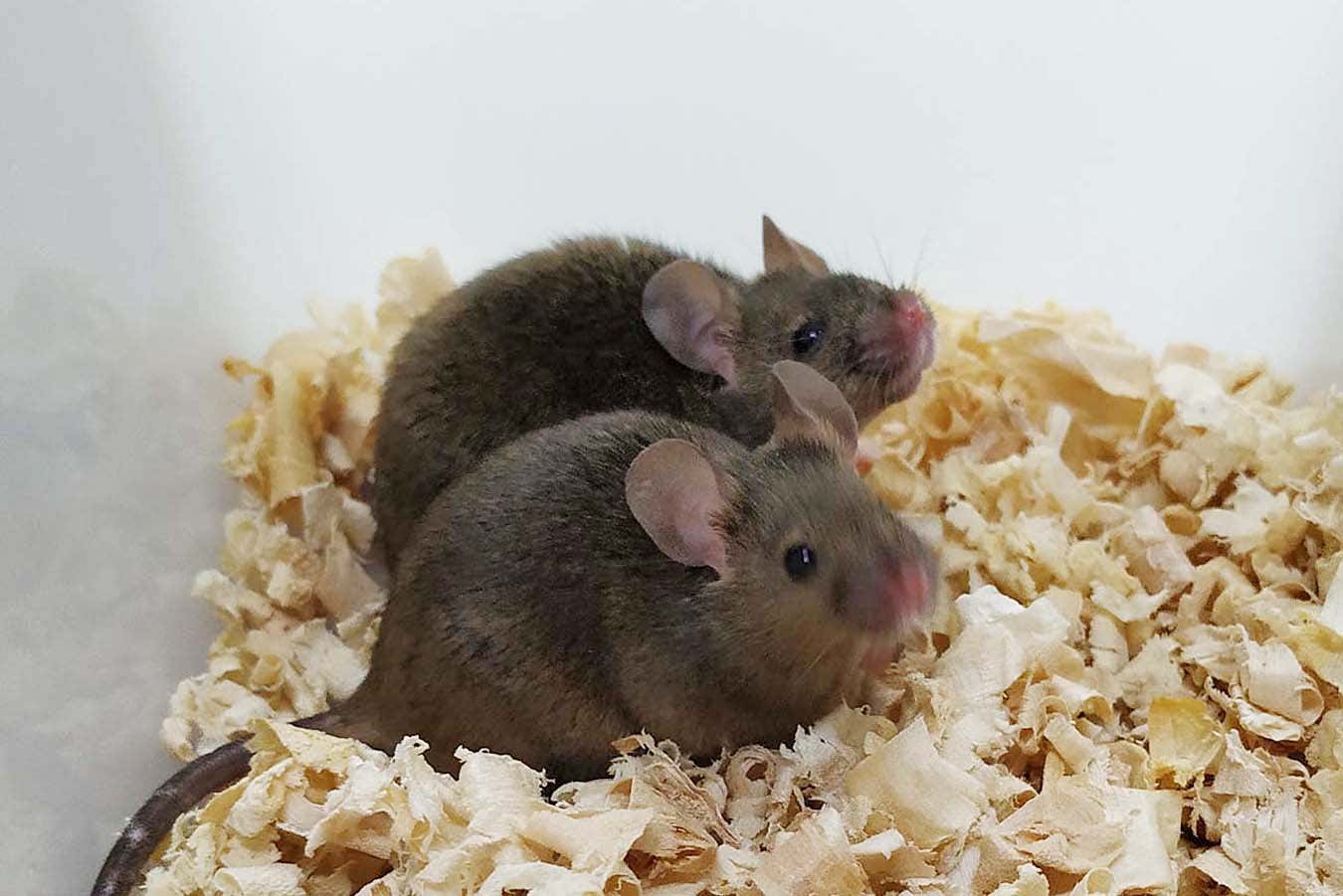
Adult male mice that have two parents and continued with their own children
YANCHANG WEI
For the first time, mice with two parents have continued their own children, marking a step significantly to allow two to have children to whom both are genetically related. However, there is still a long way to go for this could try on people.
Yancheng Wei at the University of Shanghai Jiao Tong in China achieved the feat by assembling two sperm cells in an egg whose nucleus had been eliminated. Then, the team used a method called Epigenoma Edition to reprogram seven sites in the sperm DNA, which was necessary to allow the embryo to develop.
Of the 259 of these embryos that were transferred to female mice, only two descendants, both men, survived and grew to the adult bell, which makes the success rate very low. Both lost offspring, which seemed normal in terms of size, weight and appearance, after mating with females.
Creating mice with two parents has proven to be much more difficult than creating mice with two mothers. The birth of the first fertile mouse with two mothers, Kaguya, was reported in 2004.
Kaguya had to modify genetically, but in 2022, Wei and his colleagues were able to create mice without a father in a similar way, only the epigenoma edition, which alter the DNA sequence. This same method was used to make mice without moths.
The reason why it is such a significant feat to create mammals with two parents or two moths is due to a phenomenon called impression, which is a relationship with the fact that most animals have two sets of chromosomes, one inherited from the mother and another of Terher.
Duration The formation of eggs and sperm, chemical labels are added to these chromosomes that program some genes to be active and others so that they are inactive. These changes are called “epigenetics” because they do not change the underlying DNA sequence, but labels can still be transmitted when cells are divided, which means that their effects can last a lifetime.
Crucially, epigenetic programming in mothers is different from that of fathers, with some genes that are labeled as “ignition” in sperm that are labeled as “turned off” in eggs, and vice versa.
This means that if an egg has two sets of maternal chromosomes, or two sets or paternal, it cannot be normally developed. A gene that must be active in a chromosome or a pair can be deactivated in both, or both copies of a gene can be active when only one should go, resulting in a “desktop” or that gene.
In the case of Kaguya, the researchers managed to eliminate part of a gene to make the activity of the general gene more normal. But creating mice with two parents requires many more changes.
Earlier this year, a separate team in China got some mice with two parents to grow to adult bell after 20 genetic modifications to normalize their genetic activity, but thesis mice were not completely healthy or fertile.
While the correction of gene activity through genetic modification is useful for studying impression on laboratory animals, it would be unacceptable in people, especially the effects of genetic changes are not full.
For their epigenetic approach, Wei and its equipment used modified forms of CRISPR proteins that are common that are used for gene edition. Like standard CRISPR proteins, it can be done to search for specific sites in genomes. But when these sequences are found, modified proteins add or eliminate epigenetic labels instead of altering DNA.
The study is a great step forward, says Helen O’Neill at University College London. “Confirms that genomic impression is the main barrier to uniparental reproduction in mammals and shows that it can be overcome.”
Because it does not imply genetic modification, the epigenoma edge approach could, in principle, be used to allow same -sex couples to have their own genetic children. However, the success rate would need to be much higher, the technique could be considered for use in people. “While this research on the generation of descendants of same -sex parents is promising, it is unthinkable to translate it to humans due to the large amount of eggs, the large number of necessary substitute women and the lower more than Christophete in Christophete in Christophete in Christbure in Christoph.
There are several reasons why the success rate was so low. To start, combining two sperm cells means that a quarter of the embryos had two chromosomes and would not have developed far. In addition, the epigenoma edition only worked in the seven sites in a small proportion of embryos, and could have had effects outside the objective in some cases.
The success rate and health of animals can be improved by altering more than seven sites, but this would probably not translate in using people because it is likely that the alteration of the need is different from those of mice.
If human babies with two parents are created in this way, they would be three parents’ babies because mitochondria in their cells, which contain a small amount of DNA, would come from the egg donor.
In 2023, a team in Japan announced the birth of mice puppies with two parents using a third technique that implies converting mouse stem cells into eggs. However, it is not clear if a puppy survived until adulthood, and so far no one has managed to convert human voice cells into eggs.
Topics:



